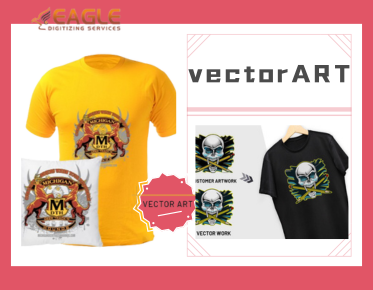The Comprehensive Guide to Converting a Logo into a Vector
Logos are a critical component of brand identity. As businesses continue to thrive in an increasingly digital world, the need to adapt logos into scalable formats becomes paramount. This is where vector conversion comes into play, turning artworks into versatile vector files. These are ideal for various uses, whether in print or digital spaces. In this guide, we'll explore the steps for converting a logo into a vector, available services, and the advantages of using vectors in today’s market.
Understanding Vector Conversion
Before diving into the conversion process, it’s important to understand what vectors are. Unlike raster images composed of pixels, vector images are made up of paths defined by a start and end point, along with curves and angles. This structure allows them to be infinitely scalable without losing quality. This means whether you're using the image on a tiny business card or a large billboard, the quality remains consistent. Adobe Illustrator and Corel Draw are popular tools commonly used for vector creation and modification.
The Step-by-Step Process of Vectorizing a Logo
When converting a logo into a vector format, there are a few important steps to follow:
Step 1: Choose the Right Software
To begin vectorizing a logo, select a good vector graphics editor. Adobe Illustrator is one of the most popular used, thanks to its comprehensive tools and features. Corel Draw is another excellent option that provides robust vector editing capabilities. Alternatively, there are also online vector conversion services that can assist with this process.
Step 2: Import Your Image
Open your graphic software and import the logo that needs converting. This is usually a raster image in formats like JPEG, PNG, or BMP. Ensure the imported image has a high resolution to capture all details accurately.
Step 3: Use Tracing Features
Most vector software comes equipped with an auto-tracing feature. This automatically traces bitmap images into vector paths. Adjust the tracing settings to refine details and reduce noise, ensuring the vector represents the original closely.
Step 4: Refine the Vector Paths
Even with automated tools, manual refinement might be necessary. Use the pen tool and node editing to tweak curves and angles. This ensures the vector representation is clean and precise.
Step 5: Save in a Vector Format
Once you're satisfied with the vectorization, save the file in a vector format like SVG, AI, or EPS. These formats are compatible with most design software and are ideal for various applications.
Advantages of Vector Graphics
The benefits of converting logos into vector forms are manifold. First, vectors maintain image quality irrespective of scaling. They're easier to manipulate, enabling customizations without degradation. Vectors are also compatible with numerous platforms and printing services, providing flexibility for various marketing needs.
Using Professional Services for Conversion
Not everyone possesses the expertise to convert logos into vectors. Professional vector conversion services offer an ideal solution. Eagle Digitizing, for example, specializes in converting raster images to vector formats with a high level of precision. They offer services from simple vectorization to complex artwork, ensuring that any logo conversion requirement is met with expertise【4:1†source】.
Catering to Diverse Needs
Different businesses have varying needs for vector logos. From small business printing to large advertising banners, Eagle Digitizing caters to all. Their services are tailored for marketing agencies, screen printers, and graphic designers among others. They ensure every design is handled with precision and delivered promptly【4:4†source】.
Future Trends in Vector Graphics
As technology evolves, so do the possibilities with vector graphics. The integration of artificial intelligence in design tools promises to make vector conversion faster and more accurate. This will likely bring about innovative applications in augmented reality and interactive media, where scalable graphics are vital.
For businesses and creatives, keeping abreast of these advancements can provide a competitive edge. Exploring professional services like those offered by Eagle Digitizing can also streamline processes, ensuring high quality and satisfaction.


